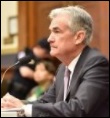by Pam Martens and Russ Martens, Wall St On Parade:

Millions of Americans are beginning to ask themselves this question: Is the Federal Reserve (the “Fed”) a competent central bank or a terminally compromised regulator that simply does the bidding of Wall Street’s mega banks to the peril of average Americans and the U.S. economy? Millions of other Americans have already made up their minds on this point.
These persistent doubts about an institution with an $8.8 trillion balance sheet – that is backstopped by the U.S. taxpayer – is very bad for confidence in the U.S. banking system, especially when the Fed pivots from one banking bailout to the next. (What was the size of the Fed’s balance sheet prior to its serial bailouts? On December 26, 2007, the Fed’s balance sheet stood at $929 billion. It has soared by 847 percent in just over 15 years of serial bailouts.)
TRUTH LIVES on at https://sgtreport.tv/
Let’s look at the evidence that’s been stacking up against the Fed since the financial crisis of 2008 – the worst economic collapse in America since the Great Depression of the 1930s.
In response to the 2008 financial crisis, the Fed introduced a hodge podge of emergency lending programs to Wall Street’s biggest banks, as well as cranking out its traditional discount window loans. While the Fed released general details of what the programs were created to do, it did not release the names of the Wall Street firms that were doing the bulk of the borrowing, or the sums borrowed by each institution.
A tenacious investigative reporter at Bloomberg News, the late Mark Pittman, filed a Freedom of Information Act (FOIA) request with the Fed for the names of the banks, the amounts borrowed and the terms. Under the law, the Fed had to respond in 20 business days. The Fed stalled Pittman for six months, leading to the parent of Bloomberg News, Bloomberg LP, filing a lawsuit against the Fed in the Federal District Court in Manhattan in November 2008. Bloomberg won that suit. The Fed then appealed the decision to the Second Circuit Court of Appeals. A large number of other mainstream media outlets and groups filed an Amicus brief in the matter, in support of the release of the information.
The Fed also lost at the Second Circuit. The Fed was, apparently, too embarrassed to take the case to the U.S. Supreme Court, because President Obama’s acting Solicitor General, Neal Katyal, planned to file a brief contrary to the Fed’s position, so a group called The Clearing House Association LLC, made up of some of the very same Wall Street banks that were being bailed out by the Fed, filed their own appeal with the Supreme Court. The Supreme Court declined to hear the case in March of 2011, leaving the decision of the Second Circuit standing.
The financial reform legislation known as the Dodd-Frank Act (which was signed into law by President Obama on July 21, 2010) had forced the Fed to release the transaction details of its seven emergency lending facilities in December of 2010. When the Supreme Court declined to hear the court case, the Fed finally released the discount window transactions in March 2011.
On March 21, 2011, then Bloomberg News Editor in Chief Matthew Winkler released this statement:
“At some point long before the credit markets seized up in 2007, financial markets collapsed and the economy plunged into the worst recession since the 1930s, the Federal Reserve forgot that it is the central bank for the people of the United States and not a private academy where decisions of great importance may be withheld from public scrutiny. As only Congress has the constitutional power to coin money, Congress delegates that power to the Fed and the Fed must be accountable to Congress, especially in disclosing what it does with the people’s money.”
The Dodd-Frank legislation, thanks to an amendment by Senator Bernie Sanders, required the Government Accountability Office (GAO) to conduct an audit of the Fed’s emergency lending programs. When that information was released in July of 2011, it revealed that the Fed had sluiced more than $16 trillion in cumulative loans at below-market interest rates to teetering banks. (Just three Wall Street firms, Citigroup, Morgan Stanley and Merrill Lynch, received $5.7 trillion of that.)
The GAO report notes on page two that the audit does not include the Fed’s loans made through its discount window during the financial crisis. Also, in a tiny footnote on page 2 of the GAO audit, there is this statement: “…this report does not cover the single-tranche term repurchase agreements conducted by FRBNY in 2008. FRBNY conducted these repurchase agreements with primary dealers through an auction process under its statutory authority for conducting temporary open market operations.” FRBNY stands for the Federal Reserve Bank of New York – the deeply conflicted and crony regulator of Wall Street’s largest banks, which is, literally, owned by the same banks. (See These Are the Banks that Own the New York Fed and Its Money Button.)
Read More @ WallStOnParade.com



